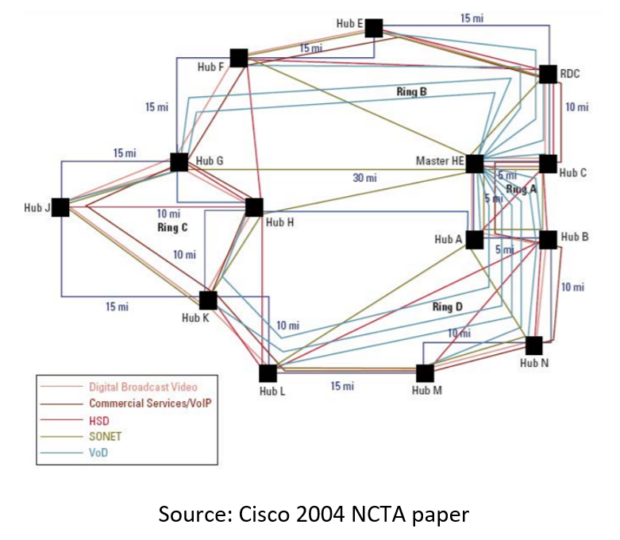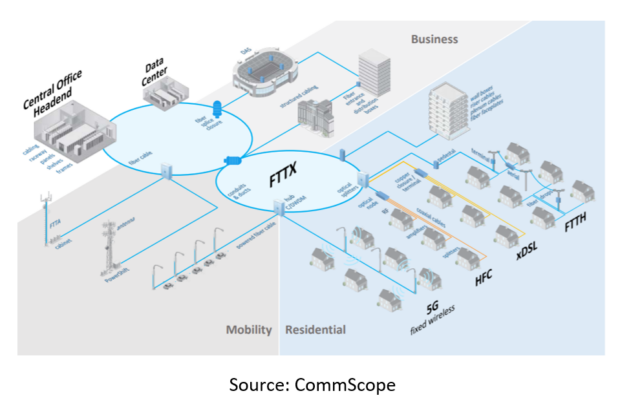Convergence: When One is Better Than Two
By Chris Bastian
SCTE, Chief Technology Officer
One of the biggest technology trends in the telecommunications industry today is Convergence. So what is Convergence? Well, it’s not new. Networks have been converging for decades. It was natural that when services were first deployed, the networks that supported those services were separate and dedicated: Video service, the original cable industry offering, by default had its own network. When data service was first deployed over cable in the 1990s, it had its own network, as did voice service when it was added into the cable “bundle” in the early 2000s. Three parallel networks were deployed and maintained by the cable operators, often traversing the same hubs, but serving specific service requirements.

Cable operators started converging their networks in the early 2000s. While working for Comcast during this time, my sustaining engineering group was responsible for designing the converged regional access networks (CRANs), using a “golden template” which standardized the configurations and operations of Ethernet networks in a geographic region. Multiple networks became one, saving capital and operating expenses for the operators because one router provided all of the network connectivity out of a hub site. (At times, two routers were deployed to provide redundancy and route diversity.)
The recent trend is to look at convergence holistically, not just converging segments of the network. By converging end-to-end service delivery, we can focus on both improving the customer experience, as well as standardizing and simplifying the operators’ operations and maintenance support, while improving service reliability.
The objectives for current convergence activities are:
- Delivering a seamless service experience to customers, while connecting via any access protocol.
- Architecting a common core and common edge — only the access segment differs.
- Converging service policy — the set of rules by which traffic classes are handled.
- Applying emerging technologies such as network function virtualization across the converged architecture, regardless of access flows.

Today’s evolutionary focus is on cable and mobile convergence. Cable operators continue to see significant mobile subscriber growth, through either building the mobile networks themselves or through mobile virtual network operator (MVNO) business relationships. This is driving the need to add mobility seamlessly into the cable operators’ existing service offering to the customer. Multiple technical organizations are pursuing the convergence objectives, including 3GPP, Broadband Forum, and CableLabs. These three organizations united to create technical reports and specifications defining the services and systems required to support 5G wireline and wireless convergence (5G WWC).
CableLabs’ 5G Wireless Wireline Converged Core Architecture Technical Report focuses on achieving the above objectives, providing customers with a unified service experience, while also outlining the following illustrative use cases:
- Continuous real-time services, delivering a consistent user experience across access networks
- Traffic bonding, aggregating data flows across separate access networks
- Providing ultra-low latency to services which require it
- Mobile x-haul, using the wireline network to transport traffic between the cell site and the core
SCTE, a subsidiary of CableLabs, formed the Generic Access Platform (GAP) working group to accelerate innovation. GAP defines common interfaces within fiber node housings that support plug-in modules conforming to its physical, thermal, mechanical and electrical specifications. GAP-compliant nodes will support the convergence of wireline and wireless, as GAP modules will include DOCSIS, PON, Wi-Fi, 5G and business services. GAP will also support the migration to multi-access edge computing, another key trend in the telecommunications industry. SCTE also provides training for the industry workforce to support both the common core and the differing access segments. One such course is Mobility Essentials. Visit www.scte.org to learn more about the GAP initiative and training opportunities (and check out the website’s newly renovated look).
Convergence is the hot topic at this year’s Cable-Tec Expo, a hybrid conference held October 11th to 14th, 2021 in Atlanta, Georgia as well as live-streamed. Fourteen papers will be presented on convergence topics, as well as over 100 other papers on topics such as workforce transformation, energy management and network security. Check out expo.scte.org to learn more.
Chris Bastian is the chief technology officer for SCTE, the not-for-profit membership organization leading the acceleration and deployment of cable technology. For more information, visit www.scte.org.